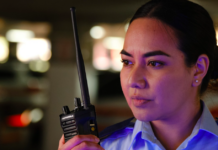
Accenture, Intel and the Philippines-based Sulubaaï Environmental Foundation have developed a new solution powered by artificial intelligence (AI) to monitor, characterise and analyse coral reef resiliency.
The solution, the work product of Project: CORaiL, an initiative the three organisations created in 2019, has been deployed in a reef in the Philippines since last year.
“Project: CORaiL is an incredible example of how AI and edge computing can be used to help researchers monitor and restore the coral reef,” said Rose Schooler, corporate VP in Intel’s sales and marketing group.
A critical element of Project: CORaiL was to identify the number and variety of fish around a reef, which serve as an important indicator of overall reef health. Traditional coral reef monitoring efforts involve human divers manually capturing video footage and photos of the reef. In addition to being dangerous and time-intensive, this approach can disrupt marine life, as divers might inadvertently frighten fish into hiding.
Engineers from Accenture, Intel and Sulubaaï implemented an artificial, concrete reef — called a Sulu-Reef Prosthesis (SRP) — to provide support for unstable coral fragments underwater. The SRP was designed by Sulubaaï and placed in the reef surrounding the Pangatalan Island in the Philippines. Fragments of living coral were planted on it and will grow and expand, providing a hybrid habitat for fish and marine life.
Since being deployed in May 2019, the solution has collected roughly 40,000 images, which researchers have used to gauge reef health in real-time.
Engineers from Accenture and Intel are already at work on the next-gen Project: CORaiL prototype, which will include an optimised convolutional neural network and a backup power supply.
They are also looking into infra-red cameras which will enable videos at night to create a complete picture of the coral ecosystem. Additional uses could include studying the migration rate of tropical fish to colder countries and monitoring intrusion in protected or restricted underwater areas.















